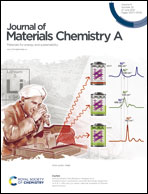Functional polymers in electrolyte optimization and interphase design for lithium metal anodes
Abstract
The lithium metal anode (LMA) is considered one of the most promising anode materials because of its highest specific capacity and lowest reduction potential. However, the application of LMA is hindered by uncontrollable dendrite growth, an unstable interphase, and large volume fluctuations. The optimization of electrolytes and the introduction of artificial interphase layers are promising ways to address these issues on the interface between electrolyte and electrode. As an important component in electrolyte engineering and surface modification, functional polymers are attracting great attention. This review aims to provide a conceptual understanding of functional polymers in reducing dendrite growth, building a stable interphase, and accommodating volume change. There is a particular focus on the detailed interfacial chemistry and Li+ ion transport/transfer mechanism. Finally, perspectives on the current challenges and research directions for functional polymers for advanced LMAs are presented.



 Please wait while we load your content...
Please wait while we load your content...